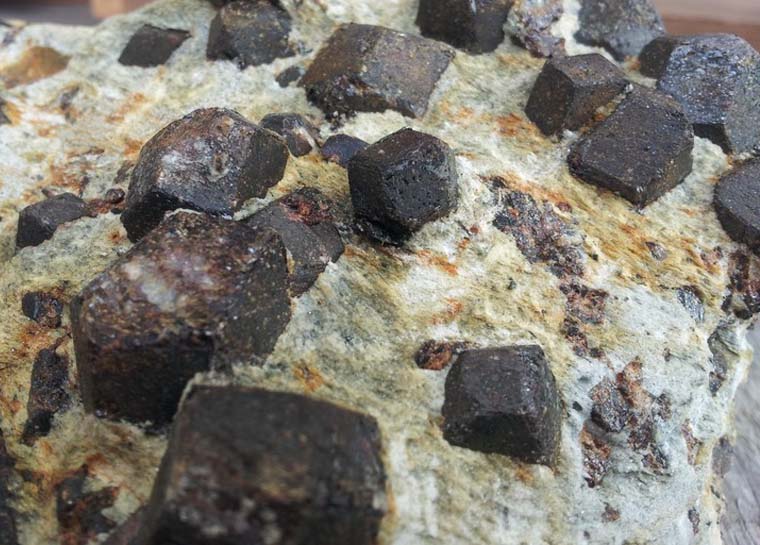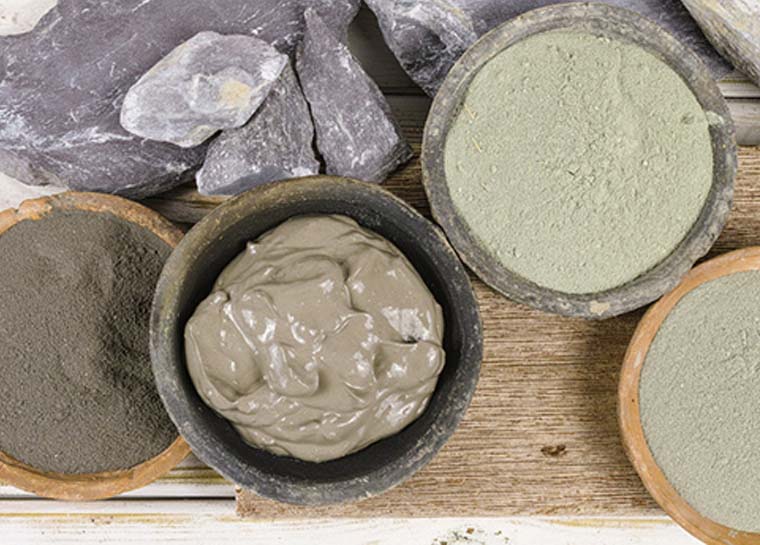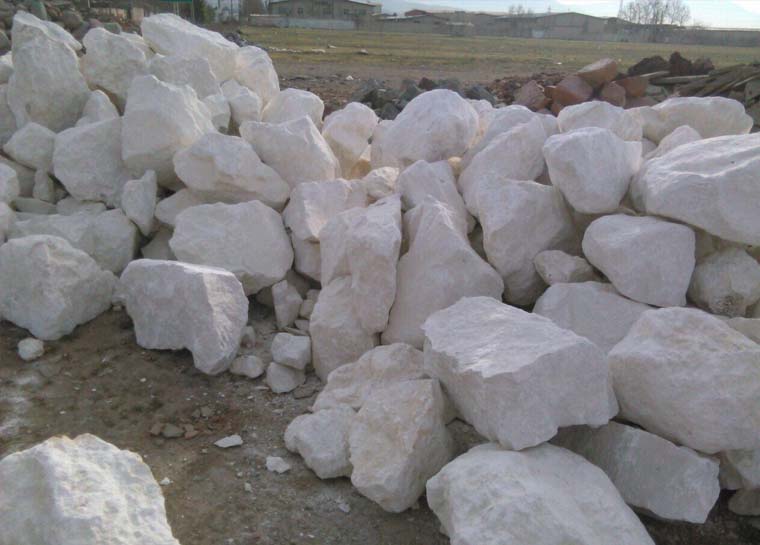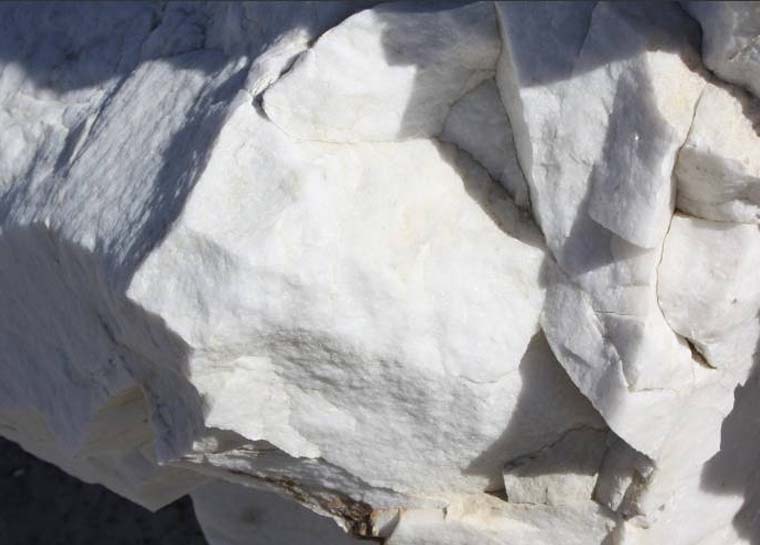The name Garnet or Grona is derived from the Latin word granatus because the red seeds of this mineral are similar to the seeds of pomegranate fruit.
General Specifications
Garnet is a colorless to reddish-brown, greenish-gray mineral with a specific gravity of 4.2-5.3 g/cm3, a hardness of 6.5-7.5 on a mouse scale, a polish oily or glassy, rough (shell) fracture, crystallubic system, no cracks and fractures. Garnet with the general formula A3B2 [SiO4] 3 in which: A represents CaO, Mn2 +, Mg, Fe2 + and B represents Cr, Al, Fe3 +. Garnet minerals include Almonden, Grossoller, Pyrope, Espartine, Andalusite, and Ouarquite minerals.
Garnet forms an isomorphic series with a complete solid solution. With the exception of chromium-containing grones, the rest of the grones melt more easily and, after melting, produce pearls of different colors. Garnets are characterized by high prominence and their isotropic nature with poor birefringence. Grona ferrous types become magnetic and most grones dissolve in acids. Garnets are converted to chlorite, epidote (Ca types), serpentine (Mg types) and limonite (Fe types).
Major Uses of Garnet
A) Abrasive
Properties such as relatively high melting point (1250 ° C), semi-circular to semi-angular fracture, low or zero free silica and high resistance to chemical and physical attacks, make garnet as a quality abrasive for tools such as sandpaper and Stoning is used.
B) Wind Abrasives
Granulated and soft garnet is used in the production of grain, powder and polishing powder, these materials are used in the final stage of glassmaking, polishing of ceramics and semiconductors. Fixed grain size garnet is used in pneumatic abrasives, which require less air pressure due to their relatively high specific gravity and particle block shape. This method is used to repair ships, locomotives, trucks and cars, aircraft and the construction and maintenance of steel structures such as bridges, oil rigs, power stations, turbines and boilers, tankers, pipelines and smoothing glass and facade stones.
C) Cut with Water Pressure
Garnet is used as an abrasive in this type of cutting. In this method, water with a pressure of 40 mkg /m2 is fired from a narrow opening. It is used for precision cutting of steel, aluminum, wood, plastic, composite, glass, stone, concrete, ceramics and boards.
D) Filtering
The properties of garnet have led to its use in multimedia filter systems (municipal water treatment, separation of wastewater particles). In this type of filters, there are three layers of minerals whose size decreases from top to bottom and their density increases. Garnet resistance to re-contamination during inverse suction of water is one of its most important features.
A common type is: a layer of anthracite with a density of 1.4 and a particle size of 0.5-2.5 mm, silica sand 2.6 and a size of 0.4-1 mm and a layer of garnet 3.8-4.2 and a size of 1.0-1.4 mm and 6-25 mm.
E) Oil Wells
Less common but expanding use of garnet is in sand packages used in oil wells when high pressure oil exits the well.
F) Gemstone
Another use of garnet is as a semi-precious stone. Almandan (purple red) Andradite (black to green) Grossular (pale yellowish green) Hesonite (yellow, brown) Pyrop (light red) Pyrop-Almandan (red) Rhodolite (red-pink) Sparsite (pink-Portuguese), are different types of garnets.
G) Pharmaceutical Uses
It is said about the medicinal properties of garnets that anyone who has it with them is safe from leprosy, epilepsy and colic. Its powder has been used as an eye cream. Some Westerners still believe that having garnet in the first month of the year, January, brings happiness and success in that month.
Standards
A) Abrasive Rating
In the first place, almandan is preferred because of its specific gravity, andalusite is the second choice. At least 97% garnet, slightly free silica, in wind abrasives with a particle size of 1-3 mm. Blue cutting effect 0.06-1 mm (half the diameter of the outlet)
B) Water Filtering
Minimum specific gravity 4, circulating particles between 8 and 250 meshes with uniformity coefficient as close as possible to 1%.
C) Oil Well Sand Packages
Requires rounded and separate crystals of almandine garnet.
Recycle: One of the capabilities of garnet in abrasives is that it can be rehabilitated, cleaned, granulated and reused. The higher initial price compared to competing abrasives can be justified by a longer lifespan based on proper recycling.
Replacements
Abrasives: Bauxite and alumina, magnesium oxide, corundum, diatomite, feldspar, hematite, mannite, nephelinecinite, olivine, perlite, pumice, silica sand, starolite slag, triple, silicon oxide, ilmenite.
Filter: Anthracite, asbestos, cellulose, diatomite, mannite, olivine, perlite, pumice, silica and ilmenite.
Non-slip Surface: Alumina, sanding, silica sand.
Sand Packages of Oil Wells: Calcified bauxite.







